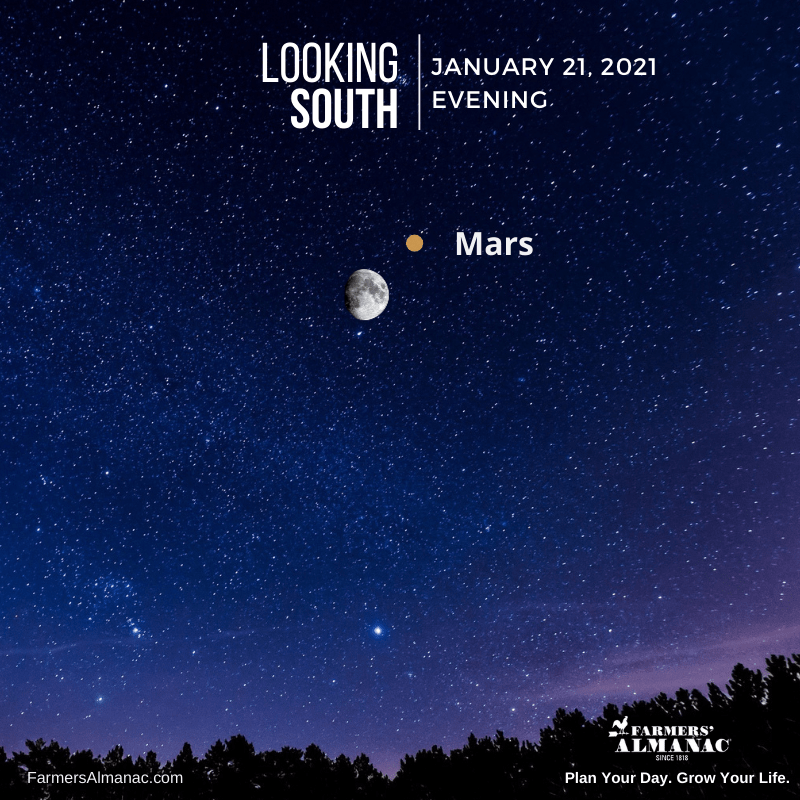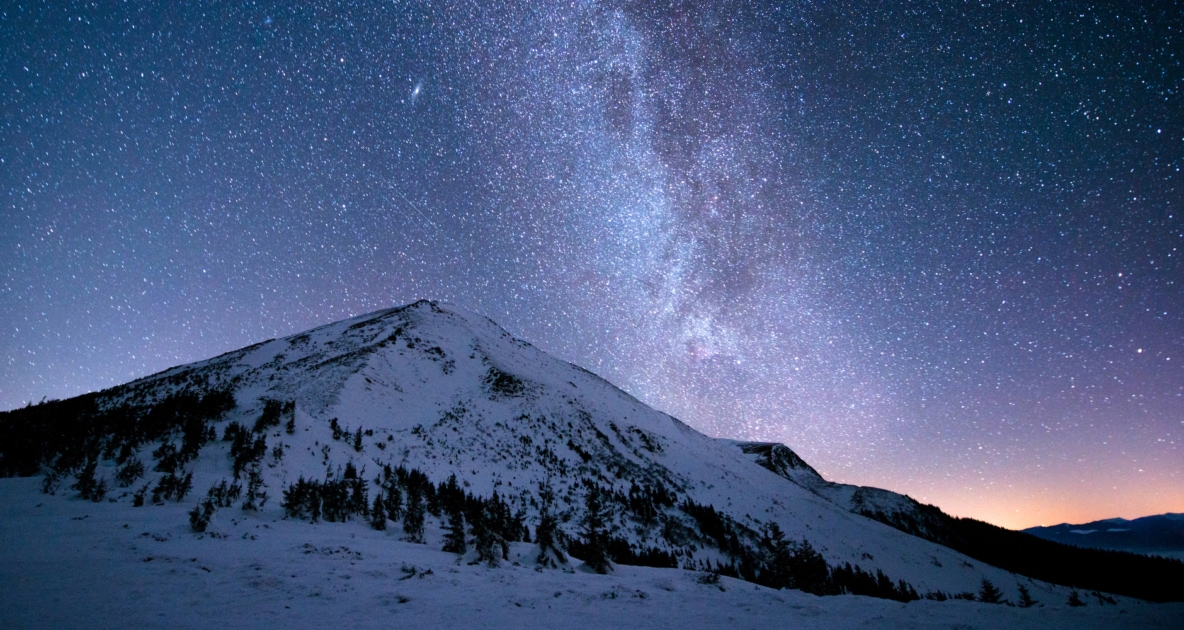January is an exciting month to look to the heavens. Below is a stargazer’s guide to January 2021’s celestial events. Take note that we sometimes will use angular degrees to define the separation between two objects, such as (for example) the Moon and a bright planet. Keep in mind that the width of your clenched fist, held at arm’s length, measures roughly 10°.
All times Eastern.
January 2 – The Earth will arrive at its closest point to the Sun in its orbit, known as perihelion—a distance of 91,399,454 miles—at 8:51 a.m.
January 4 – This year’s Quadrantid meteor shower is predicted to occur six days after the full Moon. Unfortunately, a bright gibbous Moon will curtail most attempts to view this fine annual shower, which is noted for its intense and sharply peaked display. This year, maximum activity for the “Quads,” which only lasts for a few hours, is 10 AM in the East and 7 AM in the West. What this means for the Quadrantids is that their very sharp peak will be missed in the Eastern US and will come around sunrise in the West. The Quadrantids produce 60 to 120/hr, but six hours before and after the peak the rates are only about one-quarter as strong.
So Easterners will likely see rates of about 15 to 30/hr, while Westerners will likely see rates climb toward perhaps 40 to 80 or even 50 to 100 per hour before the sky gets too bright.
Under better conditions in good years, a single observer between midnight and dawn might expect to see 40 to 60 of these moderately swift blue meteors per hour. The shower’s radiant—the point from where the meteors will appear to dart from in the sky—is halfway between the head of Draco and the end of the Big Dipper’s handle.
January 4 – This is the morning of the latest sunrise of 2021 as viewed from latitude 40°N. Beginning January 5, the Sun will start rising earlier. The change will be imperceptible at first, only coming a few seconds earlier compared to today. But by January 30, the Sun will be rising 12 minutes earlier compared to this date; by February 15th, a half-hour earlier, and by March 8th, it will have increased to a full hour. But then, a setback, as most of us return to Daylight Saving Time on March 14th and as a result of our pushing the clock ahead one hour, that second Sunday morning of March sees the sunrise as late as it does on January 27!
January 6 – Last Quarter Moon at 4:37 a.m. In this phase, the Moon appears as a half Moon in the sky. One-half of the Moon is illuminated by direct sunlight while the illuminated part is decreasing (waning), heading toward the “new” phase.
January 9 – The Moon will be at perigee, its closest point to Earth in its orbit, at 10:27 a.m.
January 10 – Mercury should make its first evening appearance of 2021 tonight, visible low in the afterglow of sunset, forming a triangle with Jupiter and Saturn. Look low near the west-southwest horizon about a half hour after sunset. Binoculars are strongly suggested as they will help pick up the planets against the bright twilight sky. Jupiter will be at the top of the triangle and is the brightest of the trio at magnitude -1.9, with Mercury (-0.9) and Saturn (+0.6) forming the base angles. The sides of the triangle each measure roughly 2°. This might be the last evening view of the “dynamic duo” of Jupiter and Saturn; while Mercury gets higher in the coming days, Jupiter and Saturn will be sinking into the sunset fires. Saturn will disappear first, followed by Jupiter by mid-month.
January 11 – Venus is coming to the end of what has been a spectacular morning apparition. Observers at mid-northern latitudes will see Venus around 10° above the southeast horizon a half hour before sunrise on New Year’s Day but only a couple of degrees above the horizon at the corresponding time on January 31st. This morning, Venus shines 4° to the left of a very thin crescent Moon forming a spectacular pair very low in the southeast dawn twilight, 60 to 30 minutes before sunrise.
January 13 – New Moon at 12:00 a.m. In this phase, the Moon is not illuminated by direct sunlight and is completely invisible to the naked eye.
January 20—First Quarter Moon at 4:02 p.m. In this phase, the Moon looks like a half-Moon in the sky. One-half of the Moon is illuminated by direct sunlight while the illuminated part is increasing (waxing), on its way to being full on the 28th.
January 20–21—On the 20th, take note of yellow-orange Mars glowing 7½° to the upper left of the Moon. On the 21st, you’ll see Mars a similar distance from the Moon, but to its upper right. Mars at the beginning of 2021, shines at magnitude -0.2 and crosses the meridian shortly after the end of evening twilight. During the first month of the year, the red planet shifts eastward through the constellation Aries, but loses nearly half of its brilliance, fading to magnitude +0.4 as its distance from us increases from 84.4 million to 110.9 million miles.

January 21 – The Moon will be at apogee, its farthest point from Earth in its orbit, at 8:10 a.m.
January 24 –Mercury is at greatest elongation, 18.6° east of the Sun. From about January 21st to 28th, you should see Mercury fairly easily if you look west-southwest from a spot with an unobstructed horizon 30 minutes after sunset. At that time Mercury is at least 10° above the horizon for observers around latitude 40° north. If you keep watching as the sky grows darker, you may see that Mercury is flanked by the stars Fomalhaut far to its left and Altair even farther to its right, but at magnitude -0.5, the speedy planet is far brighter than either star.
Saturn is in conjunction with the Sun and enters the morning sky.
January 28 – Full Moon! January’s Wolf Moon will be 100% full at at 2:16 p.m. Learn how this full Moon got its name in our short video.
January 29 – Jupiter is in conjunction with the Sun and enters the morning sky.
This astronomy calendar is adapted from “Skylog,” a regular feature, appearing in Natural History Magazine, written by Joe Rao since 1995.

